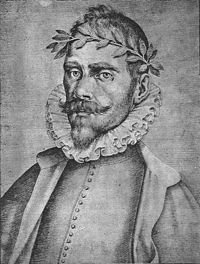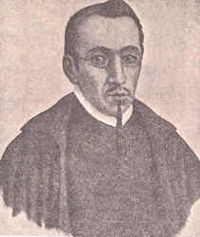New Spanish Baroque
During this period, artists of New Spain experimented with expressive, contrasting, and realistic creative approaches, making art that became highly popular in New Spanish society.
Among notable artworks are polychrome sculptures, which as well as the technical skill they display, reflect the expressiveness and the colour contrasts characteristic of New Spanish Baroque.
A choir book and a harpsichord of the 18th century highlight the importance of music for the colonial society of the Baroque period in Mexico.
He was released and donated the painting to the Archbishop of Mexico, whose successors mounted it on the Altar del Perdón at the Metropolitan Cathedral.
Some of Cristóbal de Villalpando's (c. 1649 – 1714) early work dates from 1675 with the high altar of the Franciscan convent of St. Martin of Tours in Huaquechula, where there are 17 of his paintings; but that is not necessarily the beginning of his career.
He produced a well-known oil painting titled "Glorification of the Virgin", in the dome of the Chapel de Los Reyes located in the end wall of the church.
Many great Spanish authors intended to travel to America, such as Cervantes or San Juan de la Cruz, although they did not succeed for various reasons.
He adopted the nickname "Vandalio" and composed a song in the Petrarchan style to a beautiful woman named Laura Gonzaga.
To such a woman was dedicated the famous madrigal that has been included in all anthologies of poetry in the Spanish language: Eyes clear, calm, Since you are praised for your tender gaze, Why, when you look at me, do you look angry?
In the same songbook there are many sonnets whose pattern was essentially the rendering of a loving thought of Petrarch or Ausiàs March in the quartets, and a further, more personal development in the tercets.
His early works were "Las Paredes Oyen" (Walls Have Ears) and "Los Pechos Privilegiados" (The Privileged), both meeting with some success.
Between 1622 and 1624 he wrote "La Amistad Castigada" (Punished Friendship) and "El dueño de las estrellas" (The Owner of the Stars) as well as the vast majority of his plays.
In 1681, he wrote a book, "A Philosophical Manifesto", concerning comets, in an attempt to calm the superstitious fears arising from this cosmic phenomenon.
A Jesuit, Eusebio Kino, strongly criticized this text from an Aristotelian and Thomistic point of view; but, far from being intimidated, Sigüenza responded by publishing his work "Libra astronómica y philosóphica" (1690).
Here he rigorously justified his view of comets, referring to the most current scientific knowledge of his time; against the Thomism and Aristotelianism of Father Kino he quoted authors like Copernicus, Galileo, Descartes, Kepler and Tycho Brahe.
In 1693 he was sent by the viceroy as a companion of Andrés de Pez in an exploration trip to the north of the Gulf of Mexico and in particular the peninsula of Florida, where he drew maps of Pensacola Bay and the mouth of the Mississippi River.
Unfortunately, his untimely death interrupted the work, which was not resumed until centuries later when criolla self-awareness had developed enough to be interested in the identity of their nation.
Sor Juana Inés de la Cruz (1651 - 1695), known as the "Tenth Muse", was born on 12 November 1651 in San Miguel Nepantla and died in Mexico City on April 17, 1695.
Her passion for literature began in childhood, but as a woman, she could not get into university, so she started to write poetry, pieces of music, sonnets, ten-line stanzas and books.
She first entered the Carmelite order, but decided to change to the Jerónimas in the Convento de San Jerónimo (Mexico City), which is now University of the Cloister of Sor Juana.
There was presumed to be a lesbian relationship between Sor Juana and Viceroy María Luisa Manrique de Lara y Gonzaga yet there was no certain evidence.
During the Renaissance in Europe, the Baroque style was born, and that includes artists like Michelangelo, Gian Lorenzo Bernini, Leonardo Da Vinci, Sandro Botticelli or others.
Spain had its new baroque style, which built altarpieces with Estípites or Solomonic columns, this style was used to decorate mainly churches, such is the case of the Cathedral of Santa María de la Sede of Seville, the Church of the Holy Spirit La Clerecía (Salamanca), or the Cathedral of Santa Eulalia in Barcelona.
In In the same cathedral is the Altar of Forgiveness, also built by Jerónimo de Balbas, 1735, the original was destroyed in a fire in 1965, the current one is an exact replica.







